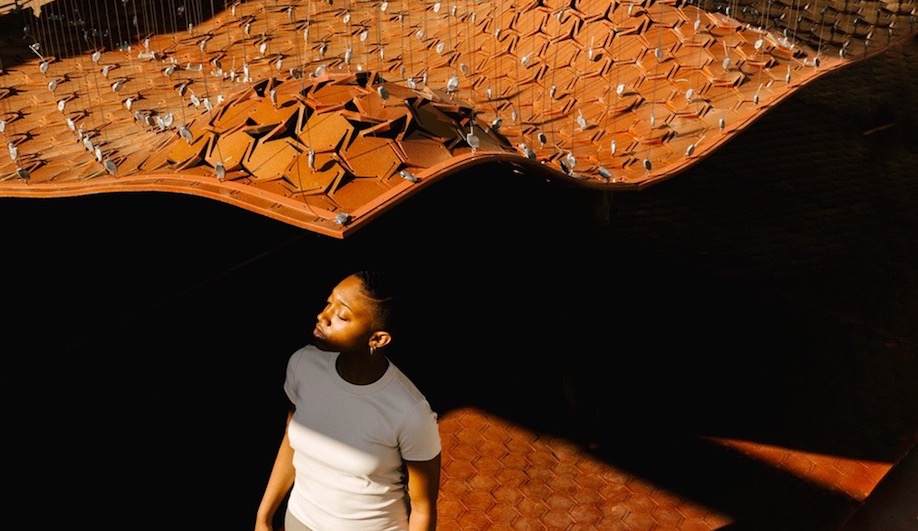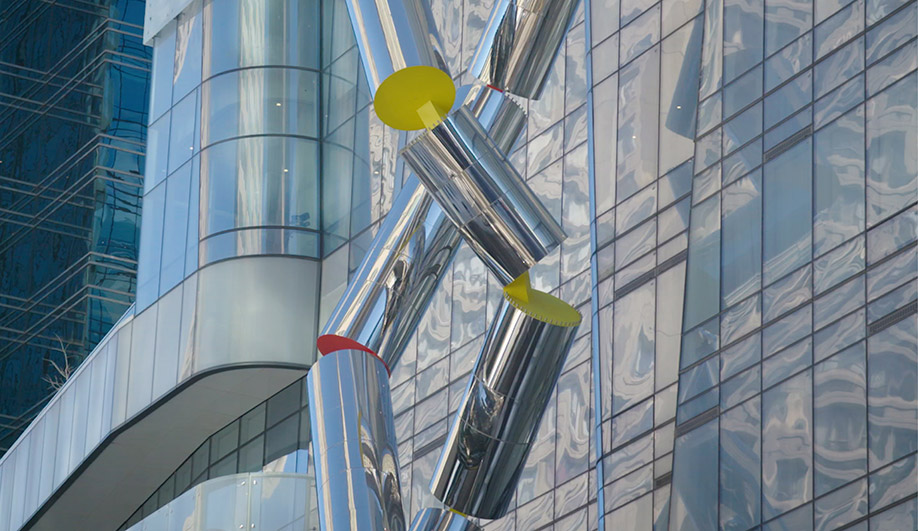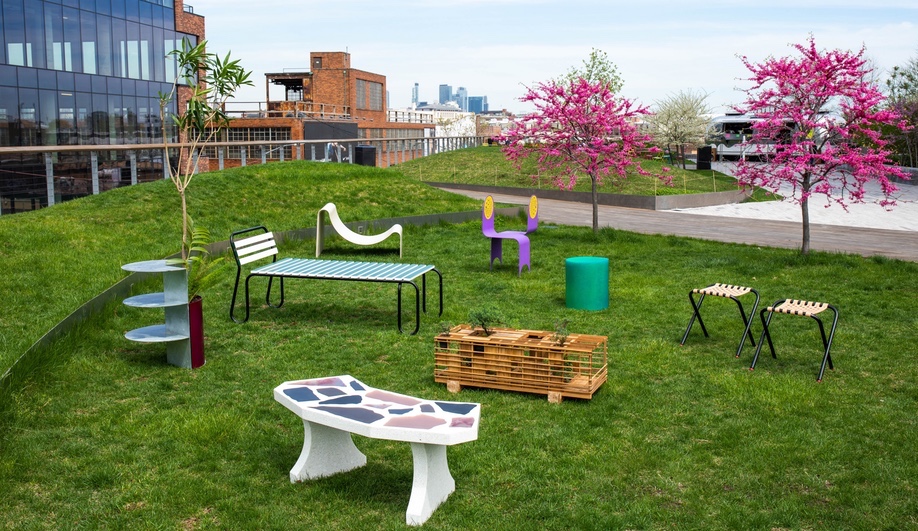
Give Cerith Wyn Evans two kilometres of neon tubing, and here’s what he can do.
While he strolled the spacious halls at the Tate Britain as a security guard in the 1980s, Cerith Wyn Evans must have dreamed of filling the neoclassical Duveen Galleries with his future work. What he couldn’t have known then is that, one day, his art would also animate Instagram accounts from London to Sydney.
It’s easy to see why Wyn Evans’ Forms in Space … by Light (in Time) went viral as it surged through the museum’s central hall earlier this summer. From a quiet neon oculus that hung like a trapeze inside the foyer, the installation appeared to lunge past the original columned archways in starbursts, swoops and scribbles. You’d be forgiven for seeing the trajectory of a dancer in these dazzling gyrations; to get the gestures right, the artist studied choreology, the art of notating dance moves.

Expanses of white neon tubing fill the vaulted ceilings of a hall at London’s Tate Britain.
Wyn Evans’ other sources of inspiration are wide-ranging and include Marcel Duchamp’s sculpture The Large Glass, Japanese Noh theatre and the Large Hadron Collider particle accelerator. A keen polymath, the Welsh artist and filmmaker has often employed neon tubing to spin his more esoteric notions into seductive icons. For Forms in Space, he used nearly two kilometres of the material and employed 25 workers over 19 days to install it. The work involved hundreds of adhesive discs, complex joints and electrical cables shooting down from the skylights. On a dreary day, the installation radiates a pure, northern light that’s more satisfying to inhabit than to simply swipe past.
This is the work’s great irony. At the unveiling, Wyn Evans lamented the dominance of the touch screen, imploring the audience, “Let’s look at looking again.” The implication of his exhortation was that his work is impossible to fully appreciate in two dimensions – and indeed, seen in person, from different angles and perspectives, it exhibits less chaotic effervescence than it does online. Even so, the unfiltered pics turning up on our social media feeds merit appreciation for what they are: 2-D representations of 3-D depictions of some wildly intangible ideas.




